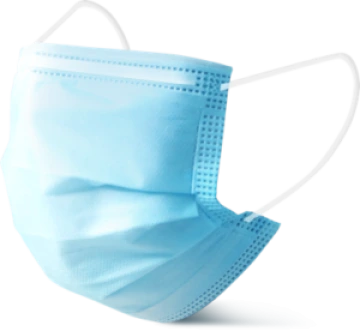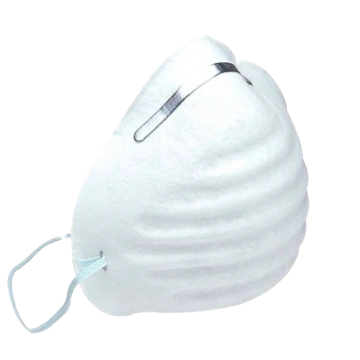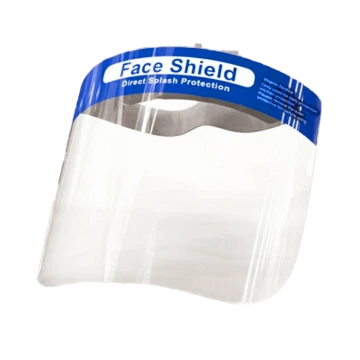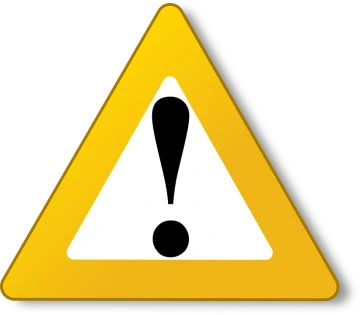What You Need to Know-Week of July 6th
The most important weekly updates for you to keep your community healthy

In this Update:
1. Mask Up and Make a Difference: What mask should I wear?
2. Testing Tips: A negative diagnostic test should not be put to rest!
3. Pandemic Preparedness: Contact Tracing
1. Mask Up and Make a Difference: What mask should I wear?
It is extremely important to wear face masks in public during COVID-19, and in many cities in Arizona it is becoming required. However, the term “face mask” (sometimes referred to as face coverings) can mean a lot of things, so it may be helpful to get familiar with some of the different types available. Face masks are a broad category of protective covering for the mouth and nose. Face masks are designed and used for a wide variety of purposes and there are many shapes, sizes, designs, and materials available.
Some important notes to remember:
- Face masks are not for your protection; they are for the protection of everyone around you.
- While not all face masks and coverings are equally protective against COVID-19, any face covering is better protection for the people around you than none at all.
- Face masks alone are not enough to stop the spread of COVID-19; everyone must continue with physical distancing and strict hand hygiene (hand washing and/or use of hand sanitizer).
- Face masks and cloth face coverings, to be effective, must cover your mouth AND nose and fit snugly to your face so that there aren’t visible gaps around the edges.
Reserved for “High Riskers”: Due to shortages in Personal Protective Equipment (PPE) in many medical facilities, the WHO and CDC continue to request that the public reserve medical/surgical-grade masks and respirators for healthcare professionals and medical first responders who are at high risk of contracting COVID-19, or for members of the public who are at high risk of complications from COVID-19 such as the elderly, immunocompromised, or those with underlying health conditions such as heart disease or diabetes. Additionally, construction workers and tradespeople rely on particulate (e.g. dust) masks to protect their lungs while working, so particulate masks should also be reserved for those in high-risk trades and professions. If you aren’t a “high risker,” stick with cloth face coverings or non-medical disposable masks.
For a simple, no-sew way to make your own face covering, please watch the CDC’s instructional video. With only a t-shirt and two rubber bands you’ll be able to meet your city’s face mask requirements in less than 5 minutes.
|
Image
Effective |
Image
Effective |
Image
Effective |
Image
Effective |
Image
Not Effective alone |
|
Cloth Face Coverings Image
|
Disposable Masks Image
|
Particulate Masks Image
|
Respirators Image
|
Face Shields Image
|
|
Image
Recommended |
Image
Medical-grade Version Reserved for High RIskers |
Image
Reserved for Tradespeople |
Image
Reserved for |
Image
Not Recommended |
|
Face coverings are cloth/fabric masks which can be either purchased or easily made at home. These include everything from the CDC’s rolled up t-shirt mask to a tightly-tied bandana. To be as effective as possible, the face covering should have at least 3 layers of fabric and fit snugly to the face to help prevent moisture or droplets from escaping while you’re talking, coughing, sneezing, etc. |
These disposable blue, pleated, 3-ply face masks are commonly available and can be an effective alternative to a cloth face covering so long as they fit well. As with all face masks, ensure that it fits snugly to your face so that there aren’t large gaps and, if possible, it should also cinch around the bridge of your nose. These masks cannot be washed, so be sure to throw them away at the end of the day. Medical- or surgical-grade versions of these masks (specifically made and tested to the ASTM F2100 standard) should not typically be purchased as they are reserved for people who are at high risk of contracting, or high risk of complications from, COVID-19. |
Particulate masks are paper-based and disposable. They are intended to reduce the amount of dust or larger particulates you may inhale. These are an alternative to a cloth face covering but may offer less protection than multiple layers of fabric. |
Respirators are a type of face mask that is molded or fitted to the face to create an air-tight seal. These masks, including the N-35 and N-99 respirators, are NIOSH certified to protect the wearer from small particles in the air. |
Face shields are clear plastic shields attached to a headband of some sort. While they do stop some larger respiratory droplets in the air, they are not able to stop the spread of small respiratory droplets which may still be carrying COVID-19. |
2. Testing Tips: A negative diagnostic test should not be put to rest!
I received a diagnostic COVID-19 test result, how confident can I be in that result?
- If you were to receive a positive result on a COVID-19 test, you can be very confident that you are infected with the virus. However, there is much less confidence in a negative test’s ability to identify if someone truly does not have an infection.
Why is there more uncertainty with negative test results?
A diagnostic test is more likely to give a false negative result if:
- The test was taken on the day the person was exposed. On the day of exposure or recently after exposure (less than 4-5 days), the amount of virus particles in your body is extremely low and may go undetected on a test.
- The person is not showing symptoms at the time they are tested. Evidence suggests that COVID-19 tests are more accurate if the person is tested while they have symptoms.
- The diagnostic test sample (respiratory swab or saliva) did not detect the virus. An insufficient sample may be taken that did not collect enough of the virus particles to give a positive result.
If I receive a negative test result, should I get re-tested?
- Not necessarily. You should only consider getting retested if:
- You begin to develop symptoms or if your symptoms appear to be getting worse.
- You were tested less than 4-5 days after your exposure
- If you are certain you had close contact with someone who tested positive for the virus.
What should I do if I received a negative test result?
- Testing is not perfect, so it is important to be cautious and if you are able, self-quarantine for 10 days if you have had close contact with someone who is a known COVID-19 case, particularly if it is a household member, even if your test result is negative.
- Presumably, you received a test because you were concerned about the virus and were either experiencing symptoms or had an exposure to someone who tested positive. So it is important to continue taking precautions and note that you may be asymptomatic or presymptomatic even if you have the virus.
- If you are experiencing any symptoms, regardless of a negative test result, you should practice social distancing, wear a mask, and avoid returning to work.
- During this time you should stay home, maintain physical distancing, and watch for symptoms including taking your temperature each day to ensure it does not go over 100 degrees Fahrenheit (this is a sign of infection), and wear a face covering.
REMEMBER: you may be exposed to COVID-19 after you have been tested for the virus. Therefore, if you received a negative test result, this result only applies to you at the time you were tested – not at the time you received your result. You could still be infected by COVID-19 in the future and should continue to take safety precautions. Note that test results may take up to a week or more.
Information from this article was drawn from here
Curious about what a diagnostic test is? To find out more information, please visit this link.
3. Pandemic Preparedness: Contact Tracing
What is Contact Tracing?
- Contact tracing is a way to monitor and alert those who have come into contact with individuals who are either suspected to have COVID-19 or are confirmed cases. This Public Health tool has been used successfully for decades to slow transmission for infectious and food-borne diseases.
- Public health workers help patients or suspected patients recall their close contacts during the time they were infectious, and then the workers reach out to each contact to inform them of their potential risk, educate them on next steps, and follow up as needed.
Why is Contact Tracing important?
- The virus spreads very rapidly and easily from human to human, and contact tracing allows individuals to be aware of their potential risk and has the ability to reduce further spread of the virus. This public health tool is especially important under the current circumstances of the pandemic.
- (breaking chain of transmission) (graphic / video link)
- Contact tracing is especially useful for those with asymptomatic or mild cases, because these individuals may not know they are sick and may be unknowingly spreading the virus to their loved ones or to their community..
- Contact tracing and diagnostic testing go hand in hand to slow the spread of the virus, as a positive COVID-19 test leads contact tracers to begin alerting others of their potential exposure. Read more about the importance of diagnostic testing here.
What is the difference between Contact Tracing and Public Health Surveillance?
- While there is some overlap between who conducts contact tracing and public health surveillance, the two services differ from one another. Use the table below to learn more about the differences between these two public health topics:
| COVID-19 Contact Tracing | COVID-19 Public Health Surveillance | |
| Main goals | To contact and monitor close contacts of individuals who are suspected to have COVID-19 or tested positive for the virus. | To continuously gather, analyze, interpret, and publicize Public Health data about COVID-19. |
| Positive or suspected COVID-19 cases are contacted (usually by phone) to help recall their close contacts while they were potentially infectious. Then, the positive or suspected COVID-19 case contacts are contacted (usually by phone) to inform them of their possible exposure. |
Trained health professionals gather health data from individuals in order to inform a variety of health organizations, facilities, government, and individuals. | |
| Contact tracing allows individuals to be aware of their potential risk and has the ability to reduce further spread of the virus. | Public Health surveillance helps scientists, health professionals, and the public gain a better understanding about COVID-19 based on the data that is collected and analyzed. By providing information about your household’s health to AZCOVIDTXT, you are contributing to public health surveillance! |
|
| Examples: | SAFER team at the University of Arizona Epidemiologists Trained health professionals Contact Tracers at Health Departments |
AZCOVIDTXT Epidemiologists Trained health professionals Arizona Department of Health Services (COVID-19 data dashboard) Centers for Disease Control and Prevention Data scientists |
*AZCOVIDTXT DOES NOT conduct any contact tracing.
The next update will cover essential worker safety. If you would like to learn more about this and other topics related to COVID-19 in Arizona, please complete next week’s AZCOVIDTXT survey that you will receive via text in about a week.









